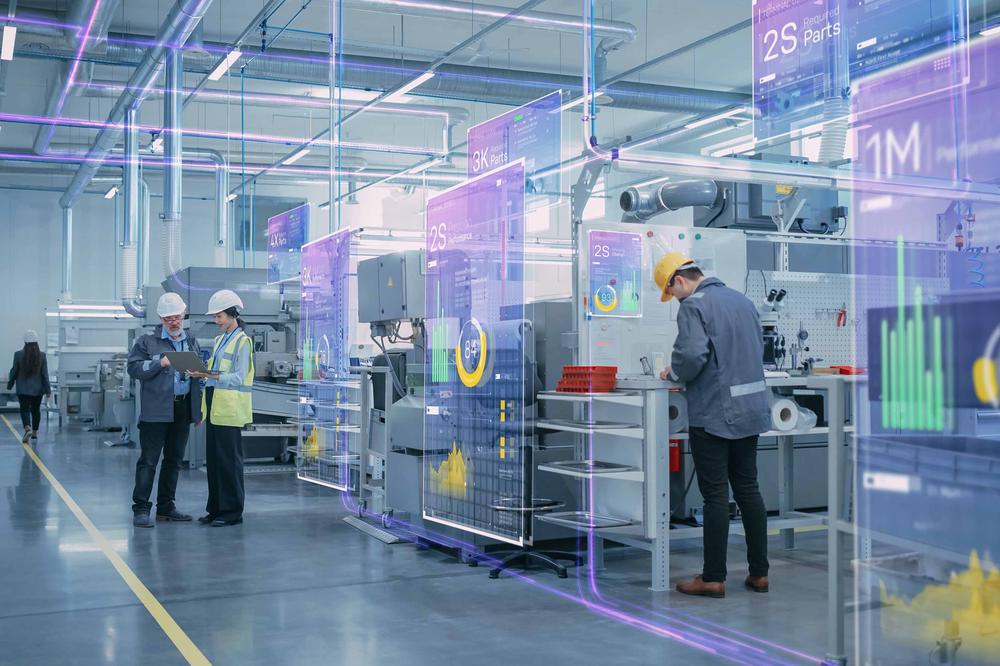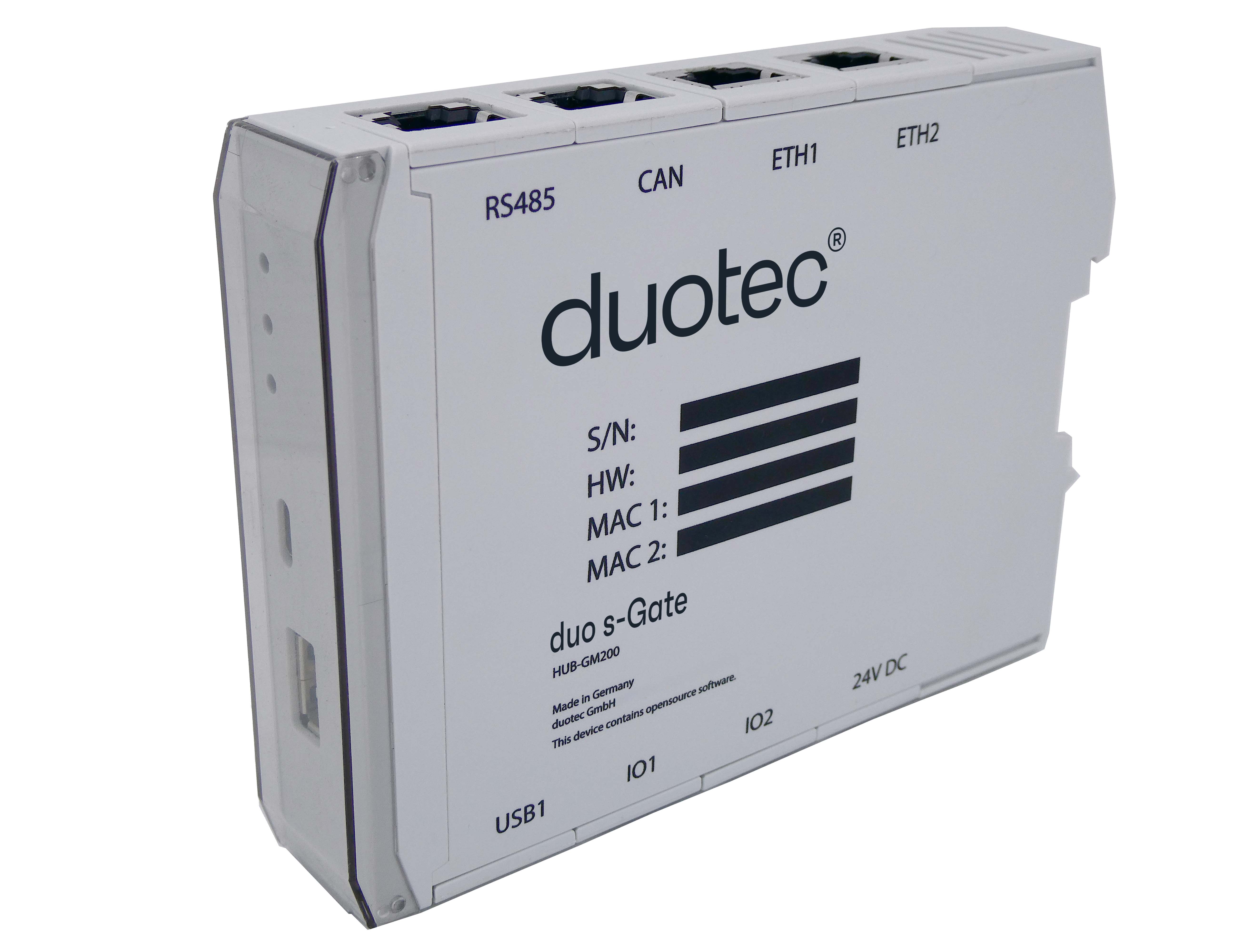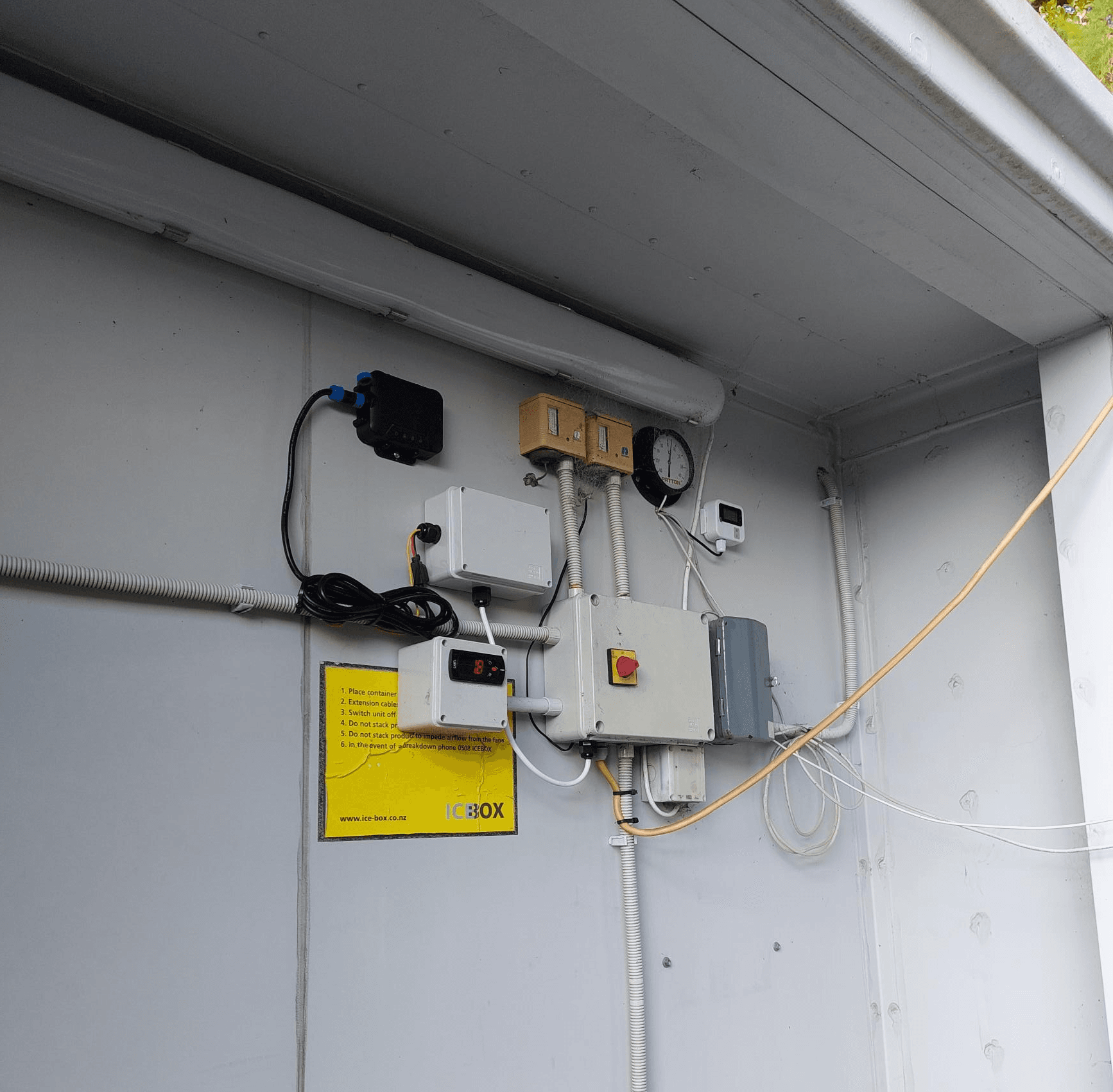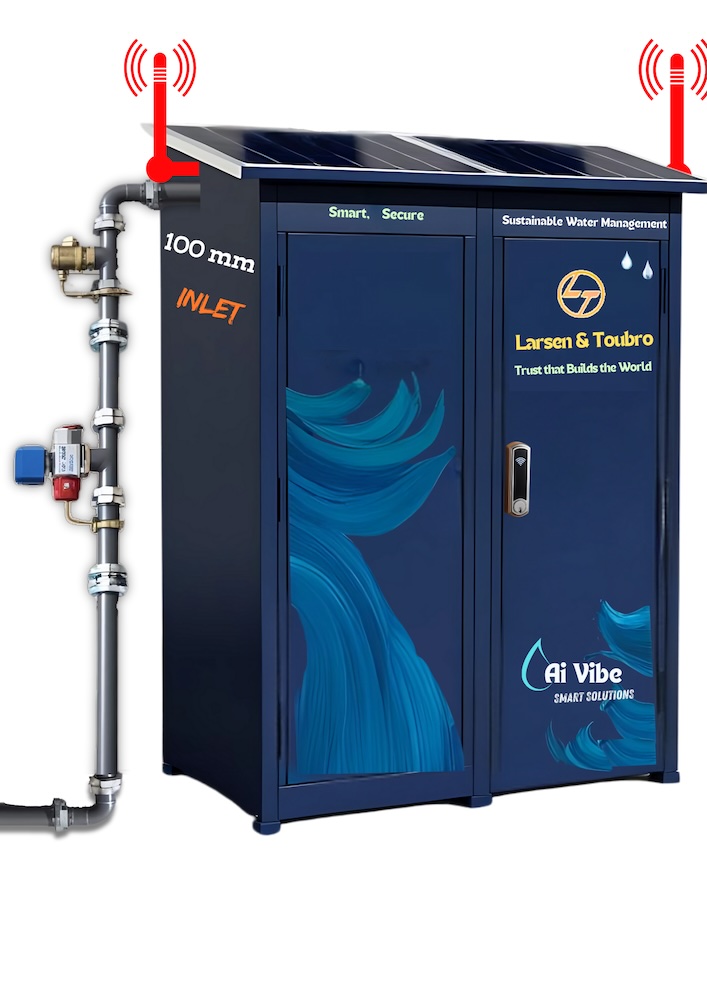
The B2B platform for the best purchasing descision. Identify and compare relevant B2B manufacturers, suppliers and retailers
Close
Filter
Result configuration
Continents
Select continent
Locations
Result types
Company type
Select company type
Industries
Select industry
Company status
Select company status preset
Number of employees
Min.
Max.
Founding year
semphos
Newcastle upon Tyne, United Kingdom
A
1-10 Employees
2019
Key takeaway
The company utilizes AWS-IoT for device management, emphasizing cost efficiency as they scale to millions of devices. They design IoT devices using ESP32, handling everything from component selection to PCB design and testing, supported by a team of experts in IoT device development.
Reference
Service
IoT Services
Reeva Smart
Ahmedabad, India
D
51-100 Employees
2015
Key takeaway
The company offers a comprehensive IoT platform that integrates AI/ML capabilities, designed to streamline the development process for developers and system integrators. Their infrastructure includes edge data storage to enhance privacy and security for IoT applications, along with tools for device management and automation, making it easier to turn IoT concepts into connected products.
Reference
Core business
Reeva Smart Home Platform
Just IoT
London, United Kingdom
A
1-10 Employees
2021
Key takeaway
Just IoT is dedicated to educating about all facets of IoT, including technologies and devices. In 2020, experts estimated the installation of 31 billion IoT devices, highlighting the growing infrastructure in this field.
Reference
Product
IoT Management Platforms » Just IoT
Looking for more accurate results?
Find the right companies for free by entering your custom query!
25M+ companies
250M+ products
Free to use
365mesh
Sydney, Australia
A
51-100 Employees
2021
Key takeaway
The 365mesh platform serves as a comprehensive foundation for end-to-end IoT solutions, offering seamless installation and extensive support services for monitoring and managing IoT deployments. With expertise in providing connectivity in remote areas, 365mesh ensures a complete IoT experience, making it a valuable partner for businesses looking to enhance their IoT infrastructure.
Reference
Service
IoT platform service provider - 365mesh
365mesh IoT Platform as a Service provides connectivity in remote and hard to reach locations. Talk to us about the best for your business.
ANTAR IoT
Visakhapatnam, India
D
11-50 Employees
2017
Key takeaway
The company specializes in Internet of Things (IoT) infrastructure, providing connected solutions that empower customers to leverage connected products for the transformation into Industry 4.0. Their focus on industrial IoT solutions highlights their expertise in this critical area.
Reference
Product
Industrial IoT Solutions
Gaonic
Kfar Saba, Israel
B
1-10 Employees
2014
Key takeaway
Gaonic provides a cloud-based sensor analytic platform specifically designed for the Internet of Things (IoT), enabling faster market entry for connected products. Their solution offers seamless networking and built-in analytics, addressing key challenges in managing IoT infrastructure.
Reference
Core business
Gaonic
Najhum Technologies LLC
Dubai, United Arab Emirates
C
11-50 Employees
2009
Key takeaway
Najhum Technologies offers a comprehensive end-to-end IoT solution, including hardware and a cloud-based platform for device management and visualization. Their mission is to leverage IoT technology to enhance productivity and efficiency for clients, providing innovative solutions that support business growth and transformation.
Reference
Service
IoTRICs – IoT Platform – NAJHUM TECHNOLOGIES
Radix IoT
Dallas, United States
B
11-50 Employees
2020
Key takeaway
Radix IoT offers a comprehensive IoT platform that enhances operational processes and efficiency through remote monitoring, data aggregation, and real-time analysis. Their manufacturer-independent and industry-agnostic solution is ideal for various applications, including Enterprise IoT and Industrial Monitoring.
Reference
Product
Collect IoT Data | Monitor Remotely | Realtime Analysis
A fully open, end-to-end solution for all your Enterprise IoT, Industry 4.0, Building Automation, Industrial Monitoring and SCADA needs.
Edgelytics Solutions Pvt Ltd
India
D
1-10 Employees
2017
Key takeaway
Edgelytics Solutions Pvt Ltd specializes in end-to-end IoT infrastructure, providing a comprehensive range of services from sensors to cloud servers. Their IoT Gateway acts as a crucial communication bridge, enhancing connectivity within IoT ecosystems.
Reference
Product
IoT Gateway – Edgelytics
Zoho Industrial IoT
Austin, United States
B
5001-10000 Employees
1996
Key takeaway
WebNMS, a former division of Zoho, has extensive expertise in the IoT market, offering a cloud application enablement platform that supports the development of both simple and complex custom applications. Their pre-built IoT solutions provide real-time insights into asset performance and predictive maintenance, catering to various sectors such as Buildings, Energy & Utilities, and Industrial IoT.
Reference
Core business
Enterprise Internet of Things (IoT) Solution | Enterprise IoT Platform - WebNMS
Technologies which have been searched by others and may be interesting for you:
A selection of suitable products and services provided by verified companies according to your search.

Product
duotec Sensor Gateway
Go to product

Service
IoT
Go to product

Product
SmartBox IoT
Go to product
A selection of suitable use cases for products or services provided by verified companies according to your search.
Use case
Sensor Gateway
industrie, Chemie, Automation, robotic
Das duotec Gateway kann unter anderem zur Erfassung und Verarbeitung von Sensordaten oder zur Übernahme der Maschinensteuerung eingesetzt werden. Es kann Peripherie und Aktoren steuern, Sensoren abfragen, überwachen und die Kommunikation beeinflussen. Anwendungen, die damit realisiert werden, sind * Fernsteuerung von IOT-Geruchssensoren. * Steuerung von Maschinen in der Textilindustrie oder anderen Branchen. * Steuerung von automatischen Werkzeugmaschinen.

Use case
Boat Montioring
Marina, Boating
otoiti Hot Pools, located on the pristine shores of Lake Rotoiti, offers a one-of-a-kind experience — boat-only access to thermal hot pools. With such a unique entry system, verifying membership and ensuring that only paying guests are using the facilities is crucial. Philo Software worked with Rotoiti Hot Pools to create an efficient, automated solution to this challenge using IoT technology, streamlining operations while enhancing both user experience and safety.
Use case
Sensor Gateway
industrie, Chemie, Automation, robotic
Das duotec Gateway kann unter anderem zur Erfassung und Verarbeitung von Sensordaten oder zur Übernahme der Maschinensteuerung eingesetzt werden. Es kann Peripherie und Aktoren steuern, Sensoren abfragen, überwachen und die Kommunikation beeinflussen. Anwendungen, die damit realisiert werden, sind * Fernsteuerung von IOT-Geruchssensoren. * Steuerung von Maschinen in der Textilindustrie oder anderen Branchen. * Steuerung von automatischen Werkzeugmaschinen.
IoT infrastructure refers to the underlying framework necessary for enabling the Internet of Things (IoT) ecosystem. This includes hardware components like sensors, gateways, and devices that collect and transmit data. Additionally, it encompasses software platforms that manage device connectivity, data processing, and analysis. A robust IoT infrastructure ensures seamless communication between devices and cloud services, enabling real-time data exchange and analytics. This infrastructure plays a critical role in supporting various applications across industries, from smart homes to industrial automation, by providing the necessary tools for data management and integration.
IoT Infrastructure plays a crucial role in facilitating device connectivity by providing the necessary frameworks and protocols for seamless communication. This infrastructure enables devices to connect over various networks, including Wi-Fi, cellular, and LPWAN (Low Power Wide Area Network), ensuring that data can be transmitted efficiently. Moreover, it supports the integration of various communication standards, allowing diverse devices to interact with one another irrespective of their manufacturer. By utilizing cloud services, IoT Infrastructure also aids in data processing and storage, which further enhances connectivity and functionality by allowing devices to communicate and share insights in real-time.
1. Devices and Sensors
These are the physical components that collect data and interact with the environment. They range from simple temperature sensors to complex machinery with embedded systems.
2. Connectivity
This involves the communication networks that connect devices to the cloud or other devices. Technologies such as Wi-Fi, Bluetooth, and cellular networks are common in facilitating data transfer.
3. Data Processing
Data processing occurs in the cloud or at the edge, where raw data is analyzed and transformed into usable information. This can include data aggregation, filtering, and analysis.
4. User Interface
The user interface allows users to interact with the IoT system. This can be through dashboards, mobile apps, or web applications that provide insights and control over the connected devices.
5. Security
Security measures are essential to protect data and devices from unauthorized access and breaches. This includes encryption, secure access controls, and regular updates to prevent vulnerabilities.
IoT infrastructure plays a crucial role in ensuring data security through several key strategies. First, it employs strong encryption methods to protect data both at rest and in transit, making it difficult for unauthorized users to access sensitive information. Additionally, robust authentication protocols are implemented to verify devices and users, ensuring that only trusted entities can interact with the network. Furthermore, continuous monitoring and real-time threat detection systems are integrated into the infrastructure to identify and respond to potential security breaches swiftly. By utilizing these advanced measures, IoT infrastructure providers create a secure environment that safeguards against data theft and cyberattacks, thus maintaining the integrity and confidentiality of the data generated by IoT devices.
Scalability options for IoT Infrastructure are essential for accommodating the growing number of connected devices. One significant option is cloud-based solutions, which allow for dynamic resource allocation. This enables businesses to scale up or down based on demand without needing extensive hardware investments. Another option involves edge computing, where data processing occurs closer to the device. This reduces latency and bandwidth usage, allowing for quick responses while still supporting large numbers of devices. Both approaches help businesses manage their IoT ecosystems efficiently, ensuring they can grow and adapt as technology evolves.
Some interesting numbers and facts about your company results for IoT Infrastructure
| Country with most fitting companies | United States |
| Amount of fitting manufacturers | 10000 |
| Amount of suitable service providers | 9563 |
| Average amount of employees | 11-50 |
| Oldest suiting company | 1996 |
| Youngest suiting company | 2021 |
20%
40%
60%
80%
Some interesting questions that has been asked about the results you have just received for IoT Infrastructure
What are related technologies to IoT Infrastructure?
Based on our calculations related technologies to IoT Infrastructure are Big Data, E-Health, Retail Tech, Artificial Intelligence & Machine Learning, E-Commerce
Who are Start-Ups in the field of IoT Infrastructure?
Start-Ups who are working in IoT Infrastructure are Just IoT
Which industries are mostly working on IoT Infrastructure?
The most represented industries which are working in IoT Infrastructure are IT, Software and Services, Other, Telecommunications, Electronics and Electrical engineering, Automation
How does ensun find these IoT Infrastructure Companies?
ensun uses an advanced search and ranking system capable of sifting through millions of companies and hundreds of millions of products and services to identify suitable matches. This is achieved by leveraging cutting-edge technologies, including Artificial Intelligence.